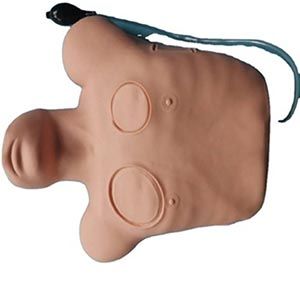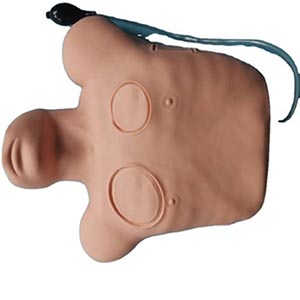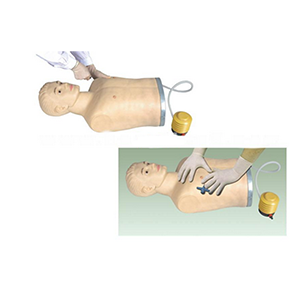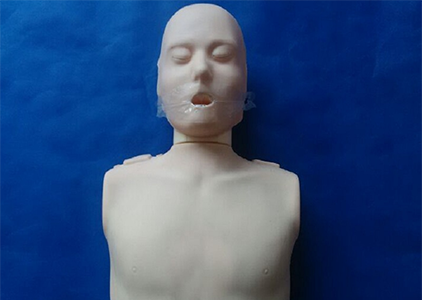
In clinical emergency treatment, pneumothorax often requires medical staff to make accurate decisions in a very short time, and wrong decisions may lead to rapid deterioration of the patient's condition. Pneumothorax treatment model, as a high simulation tool, can provide a risk-free training environment for medical personnel, through repeated practice and simulation of emergency scenarios, to help them quickly master the key steps of pneumothorax treatment, so as to make faster and more accurate decisions in actual work.
1. Simulate diverse clinical situations and strengthen decision-making ability

The clinical manifestations and management of pneumothorax are quite different, and different types of pneumothorax (such as spontaneous pneumothorax, traumatic pneumothorax) and different severity of the disease require medical staff to make different management decisions. The pneumothorax management model simulates different clinical situations, including the occurrence of different etiologies, different patient states and different complications, so that medical staff can train in diverse situations. The study showed that participants trained with the model improved their decision-making accuracy by about 25% when faced with various pneumothorax processing scenarios.
2. Improve clinical resilience and response speed
Pneumothorax treatment is often done in an emergency situation, and medical personnel need to quickly assess the condition and intervene. The pneumothorax treatment model enables students to gradually improve their reaction speed and decision-making ability in the simulation operation by highly restoring the clinical scene. For example, dynamic changes in the simulation (such as decreased oxygen saturation, shortness of breath, etc.) required participants to make diagnostic and treatment decisions in a short period of time. Studies have shown that after simulation training, the reaction time of students in pneumothorax treatment is reduced by more than 20%, and the treatment measures can be implemented in a more timely manner
3. Cultivate decision-making confidence and operational accuracy
Correct management of a pneumothorax depends on accurate judgment and operation, especially when puncturing the chest or placing a chest tube. Any misoperation can lead to serious complications. The pneumothorax handling model helps students build confidence and enhance the accuracy of the operation through repeated training. The data showed that medical personnel trained in the simulation were 40% less likely to experience complications during clinical procedures, such as a significant decrease in failed puncture or misplacement of chest tubes.

4. Strengthen teamwork, communication and decision-making skills
In practice, the management of pneumothorax is often the result of multidisciplinary team collaboration. Pneumothorax processing model not only focuses on individual operations, but also emphasizes communication and collaboration between teams. By simulating teamwork situations (such as emergency room physicians, anesthesiologists, nurses, etc.), students can practice decision making and communication in a more realistic environment. It is found that multi-disciplinary team simulation training can effectively improve the cooperation of team members in pneumothorax management, and reduce the decision delay caused by poor communication or role conflict.
5. Data-driven feedback mechanism to optimize the decision-making process
Pneumothorax processing models are typically equipped with data logging and feedback systems that track the student's performance in each round of simulation and provide detailed feedback reports. This feedback mechanism helps students understand their own decision-making blind spots and operational shortcomings, and make targeted improvements based on the data. Through repeated training and real-time feedback, students can continuously optimize their decision-making process and operational skills. A study of a first-aid training institution showed that after receiving 3 months of simulation training, the success rate of dealing with pneumothorax increased from the initial 70% to more than 90%, and the incidence of wrong decisions was significantly reduced.
conclusion
By simulating various clinical situations, the pneumothorax treatment model strengthens the clinical response ability and decision-making speed of medical staff. In high-pressure environments, repeated practice and data feedback can help students build confidence, optimize decision making, and reduce clinical errors. This model not only improves the operational accuracy of medical personnel, but also promotes teamwork and interdisciplinary communication, thereby improving emergency efficiency and patient safety. Therefore, pneumothorax treatment model has a significant positive effect on the growth of medical staff and the improvement of clinical decision-making ability.







Sophie Asveld
February 14, 2019
Email is a crucial channel in any marketing mix, and never has this been truer than for today’s entrepreneur. Curious what to say.
Sophie Asveld
February 14, 2019
Email is a crucial channel in any marketing mix, and never has this been truer than for today’s entrepreneur. Curious what to say.